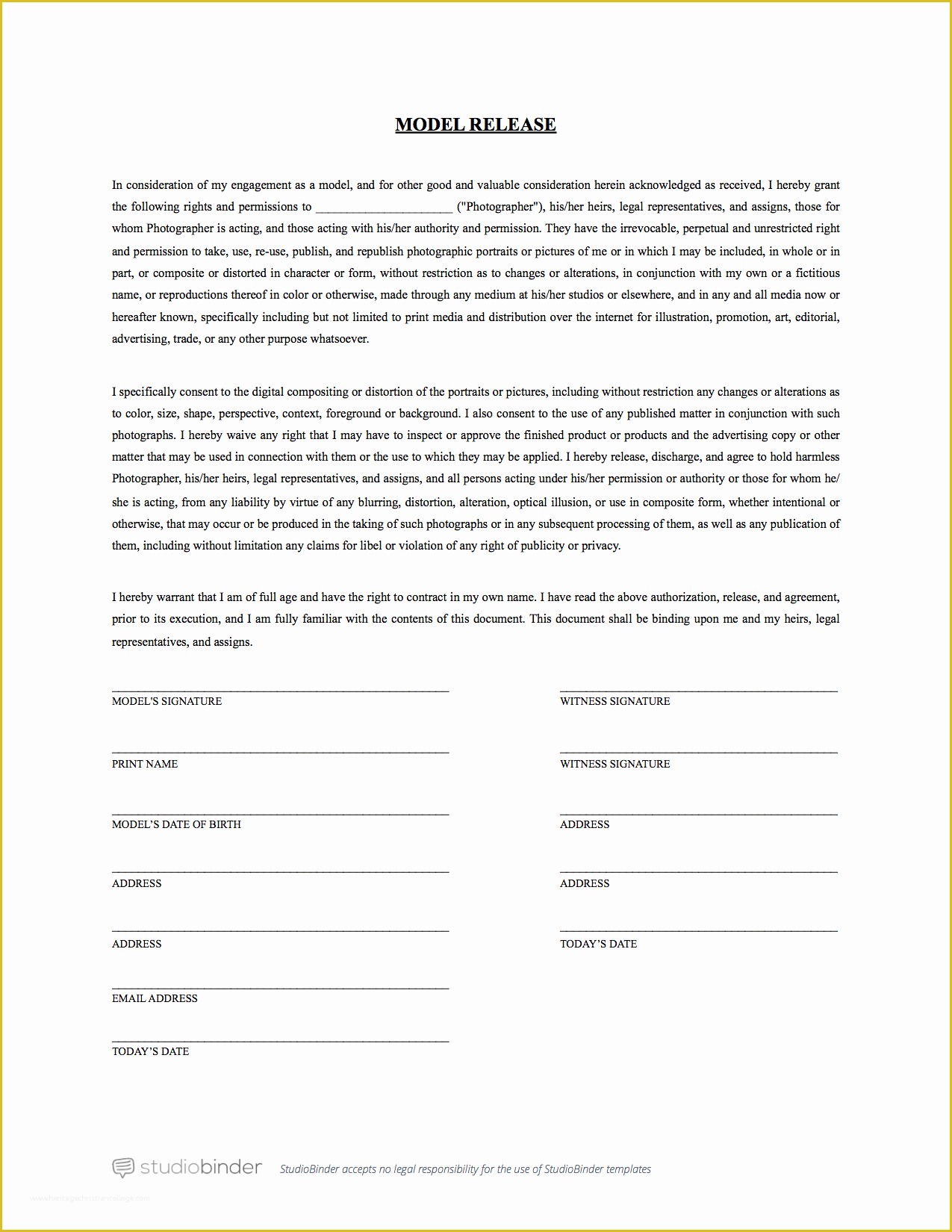Uploading a model release on iStock is an essential step for photographers and creators who want to sell their images featuring recognizable people. Whether you're a seasoned pro or just starting out, understanding the best practices for uploading your model releases ensures that you comply with legal requirements while protecting both yourself and the individuals in your photos. In this article, we’ll explore the ins and outs of model releases and how to navigate the upload process effectively.
Understanding Model Releases

At its core, a model release is a legal document that grants permission from a model to use their likeness in a photo or video for commercial purposes. This means that the person in the image agrees that you, as the photographer, can use their image to make money—like selling it on platforms such as iStock. Here’s a breakdown of key points that highlight the importance and function of model releases:
- Protection for Photographers: A model release protects you from potential legal disputes. Without it, models might claim misuse of their likeness, leading to costly lawsuits.
- Rights for Models: For models, signing a release means they are aware of how their image will be used, creating transparency and trust.
- Commercial Use vs. Editorial Use: Models typically have more control over the commercial use of their image, while editorial uses (news, commentary) may not require a release.
- Legal Requirements: Many stock photography sites, including iStock, have strict policies requiring a model release for any image featuring identifiable individuals. Not adhering to these guidelines can lead to rejection or removal of your submission.
In general, a well-drafted model release includes details such as the model’s name, contact information, the purpose of the release, and the specific uses of the images. Understanding these facets not only helps you as a photographer but also fosters a positive working relationship with your models. So, always ensure that you have the correct permissions before hitting that upload button!
Preparing Your Model Release

Before you dive into uploading your model release on iStock, it’s crucial to ensure that your document is tailored perfectly for the platform's requirements. Let’s break down the steps to prepare your model release effectively.
First and foremost, your model release should include the following elements:
- Photographer's Information: Clearly state your name and contact details.
- Model's Information: Include the model's full name, age, and contact information.
- Description of the Shoot: Explain what the images captured will be used for. A brief description lets everyone know what to expect.
- Usage Rights: Clearly state how the images can be used. Be transparent about any commercial or non-commercial purposes.
- Signature and Date: Ensure that the model signs and dates the document. This stamp of approval is crucial for validity.
Next, check if iStock has specific formatting requirements. Generally, it’s best to:
- Use clear, simple language that’s easily understandable.
- Limit the document to one page if possible – this makes it more digestible.
- Ensure all text is legible; 12-point font is usually a safe choice.
Finally, review the legal requirements of model releases in your jurisdiction. Each country may have different laws, and it’s essential to be compliant to ensure the enforceability of the release.
Steps to Upload a Model Release on iStock
With your model release prepared and ready, it’s time to upload it on iStock. The process is straightforward, but following these steps will help you avoid any hiccups along the way!
- Log into Your iStock Account: Start by logging into your iStock contributor account.
- Navigate to the Upload Section: Find the upload tab on your dashboard. This is where you will submit your images.
- Select the Images: Choose the images that correspond with your model release. You can do this by clicking on “Choose Files” or dragging and dropping them into the upload area.
- Upload the Model Release: Look for the option to upload a model release. Click on it, and select the release document you prepared earlier.
- Fill Out Required Information: Complete any required metadata such as the model’s name or the nature of the shoot. Make sure to fill everything accurately.
- Submit for Review: Once you’ve filled in all necessary fields, hit the “Submit” button. Your images, along with the model release, will then be submitted for review.
And there you have it! Keeping things neat and organized will make the process smoother. Make sure to keep a copy of the uploaded model release for your records as well!
Common Mistakes to Avoid
When it comes to uploading a model release on iStock, there are several common pitfalls that creators often encounter. Steering clear of these mistakes can save you time, frustration, and even protect your work. Here are some of the most frequent oversights:
- Not Providing Complete Information: Ensure that every section of the model release is filled out. Leaving blank spaces can lead to delays or outright rejections.
- Using Outdated Templates: Always use the latest model release form provided by iStock or relevant industry standards. Outdated templates might not cover all legal bases.
- Neglecting Signatures: The model's signature (and sometimes a witness signature) is crucial. A lack of signatures could render your release invalid.
- Missing Contact Information: Include accurate contact information for the model. This is essential for follow-ups or clarifications.
- Ignoring Regional Variations: Laws regarding model releases can differ by location. Ensure your release is compliant with local regulations.
- Submitting Low-Quality Scans: If you're uploading a scanned copy of the release, make sure it's clear and legible. Poor quality scans are often rejected.
By avoiding these common mistakes, you'll find the process of uploading a model release much smoother, allowing you to focus more on your creative work.
Best Practices for Successful Uploads
Now that you know what to avoid, let's talk about the best practices that can enhance your experience when uploading model releases to iStock. Implementing these strategies can lead to successful uploads and a more seamless workflow:
- Review iStock's Guidelines: Before uploading, familiarize yourself with the specific requirements laid out by iStock. This can save you potential headaches down the road.
- Use Clear Language: When filling out the model release, use straightforward language. Avoid legal jargon unless absolutely necessary—clarity is key.
- Keep a Copy of Releases: Always save a digital copy of the signed release for your records. This can be useful in case of disputes or for future reference.
- Double-Check Details: Verify all the information (like names, dates, and contact info) for accuracy. A simple typo can lead to complications.
- Optimize Scanning Settings: If you’re scanning the release, use high-quality settings to ensure legibility. Aim for at least 300 DPI.
- Notify the Model: Once submitted, inform the model about the upload. They should be in the loop regarding how their images will be used.
By following these best practices, you'll not only enhance the quality of your submissions but also establish a solid foundation for your relationship with iStock and the models involved.
How to Upload a Model Release on iStock: Best Practices
Uploading a model release on iStock is a crucial step for photographers and content creators who want to ensure that their work is legally protected and properly attributed. A model release is a legal document that grants permission to use a person's likeness in images, making it an essential component when selling photos on stock photography platforms like iStock. Below are some best practices to follow when uploading a model release.
Understanding the Model Release
The model release should contain the following elements:
- Name of the model: Full legal name of the person photographed.
- Date of Birth: Should be included to confirm the model's age.
- Signature: The model's signature is crucial for validating the document.
- Date of agreement: The date when the model consented to the release.
- Usage rights: A clear statement of where and how the images can be used.
Tips for Uploading
When preparing to upload the model release to iStock, keep the following tips in mind:
- Use a clear and legible format: Ensure the document is easy to read.
- Include all necessary details: Missing information can lead to rejections.
- Check for signatory requirements: Different jurisdictions may have varying requirements.
- Save in an acceptable file format: iStock typically accepts JPG, PNG, and PDF formats.
Final Steps
After ensuring that all details are correct, upload the model release through the iStock contributor portal. Double-check for clarity and legibility before submitting.
Conclusion: Following these best practices for uploading a model release on iStock not only protects your work legally but also enhances your credibility as a contributor, ultimately contributing to your success on the platform.










